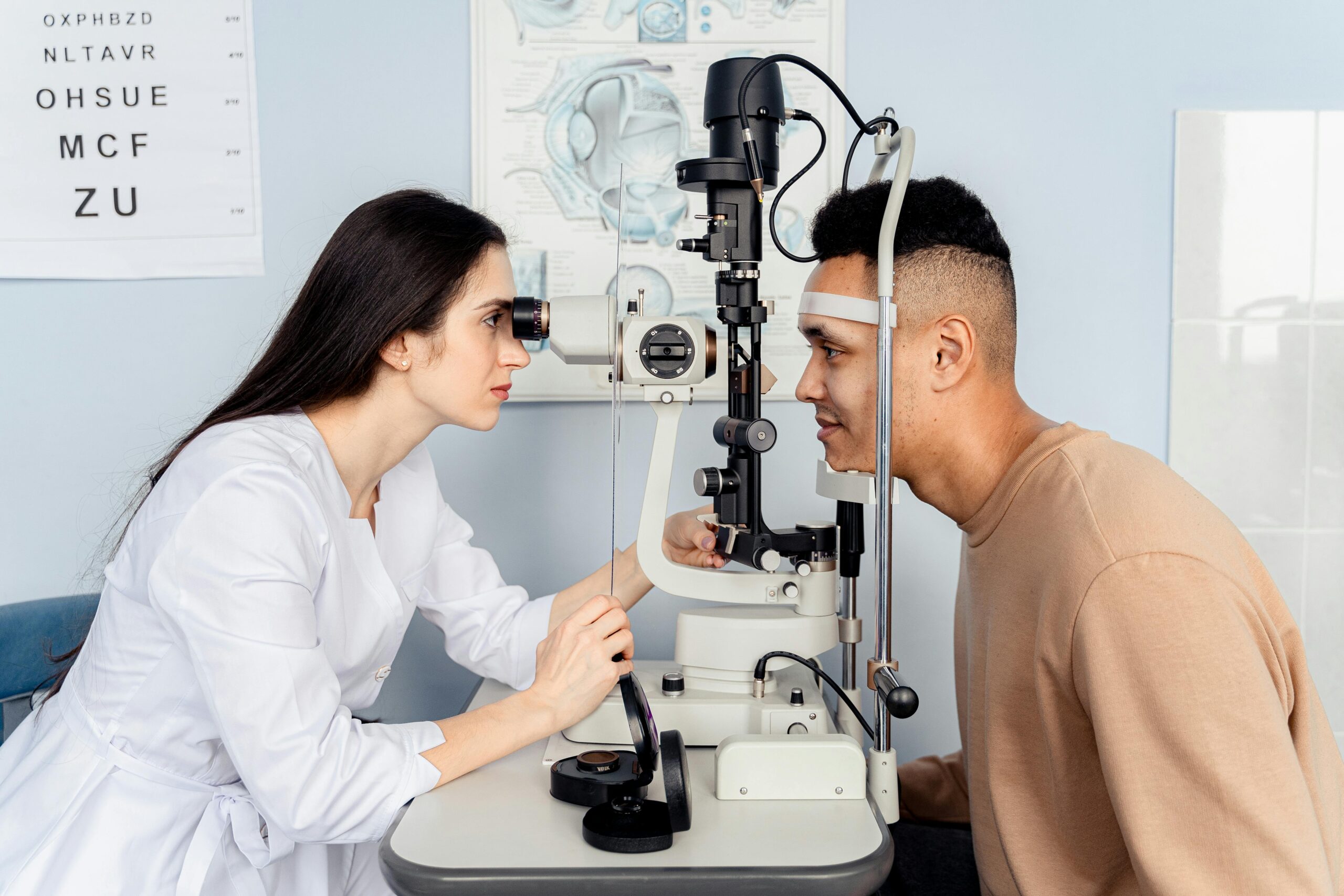
08 Oct What Tests Are Performed During an Eye Exam?
A comprehensive eye exam involves a series of tests to evaluate your vision and check for eye diseases. Your optometrist uses a variety of instruments and procedures to assess different aspects of your eye health. This process provides a detailed picture of your current vision needs. Here are some tests commonly performed during an eye exam:
Measuring Visual Distance
A familiar part of an eye exam is the visual acuity test. This test measures your ability to see clearly at various distances. You will likely be asked to read letters from a standardized chart positioned 20 feet away. The rows of letters get progressively smaller, allowing the optometrist to determine the sharpness of your sight.
To fine-tune your prescription, the eye doctor uses a device called a phoropter, and this instrument contains many lenses of different powers. The optometrist will flip through these lenses while you look at the eye chart, asking which option makes the letters appear clearer. This refraction assessment helps find the lens power you need for glasses or contact lenses.
Evaluating Peripheral Vision
Your ability to see objects to the side without moving your eyes is known as your peripheral vision. A visual field test helps assess this aspect of your sight. Problems with peripheral vision might indicate certain eye conditions or other health issues. Eye doctors often use the confrontation visual field test, and you will cover one eye and focus on their nose while they move their hand in and out of your field of view. You will tell them when you first see their hand. More advanced and precise testing may involve an automated machine where you watch for small blinking lights in your side vision.
Assessing Depth of Field
Depth perception is your ability to see the world in three dimensions and judge the distance of objects. Problems with depth perception may make activities like driving or playing sports more challenging. A stereopsis test is used to evaluate how well your eyes work together to perceive depth. During this test, you might be asked to look at a booklet of special patterns or wear 3D glasses. You will then identify which object or shape appears closer to you than the others. This helps your optometrist understand how effectively your eyes are working together to create a single, three-dimensional image.
Checking for Eye Diseases
An eye exam is also a way to screen for various eye diseases, many of which show no early symptoms. Your optometrist will perform several tests to detect conditions such as glaucoma, cataracts, and macular degeneration. A tonometry test measures the pressure inside your eye, which is a screening method for glaucoma. This is often done with a gentle puff of air or a small instrument that lightly touches the eye’s surface after numbing drops are applied.
The optometrist also uses a slit lamp to get a magnified view of the front and back of your eye. This allows them to inspect the cornea, iris, lens, and retina for any signs of abnormalities. Dilation, which involves using eye drops to widen the pupils, may be necessary to obtain a clearer view of the internal structures of your eye.
Schedule an Eye Exam Today
Regular eye examinations are a part of maintaining your overall wellness. These tests provide a comprehensive picture of your eye health, from visual sharpness to the detection of underlying diseases. By understanding what happens during an exam, you can feel more comfortable and informed. Contact an eye doctor today to schedule your next eye exam.

No Comments